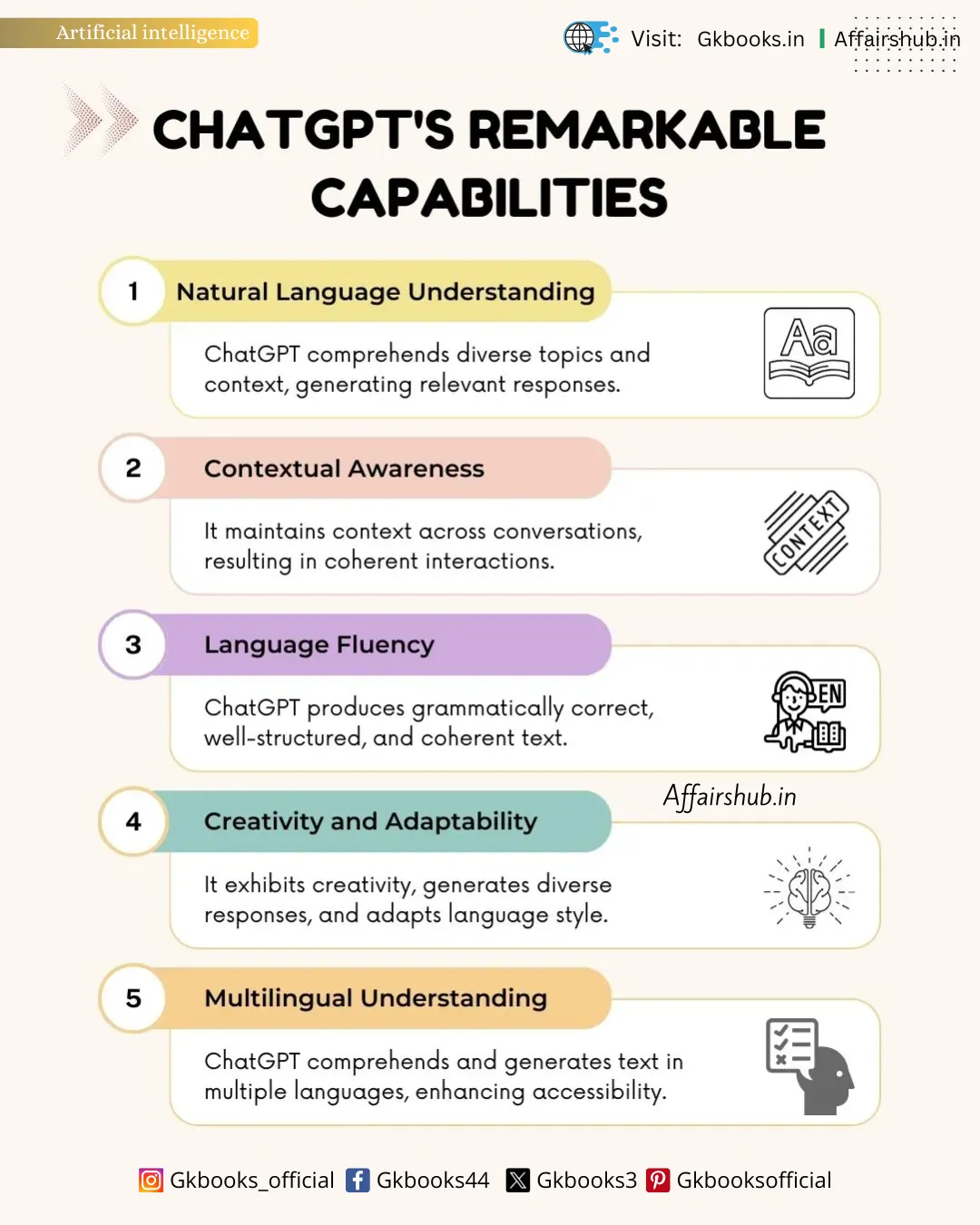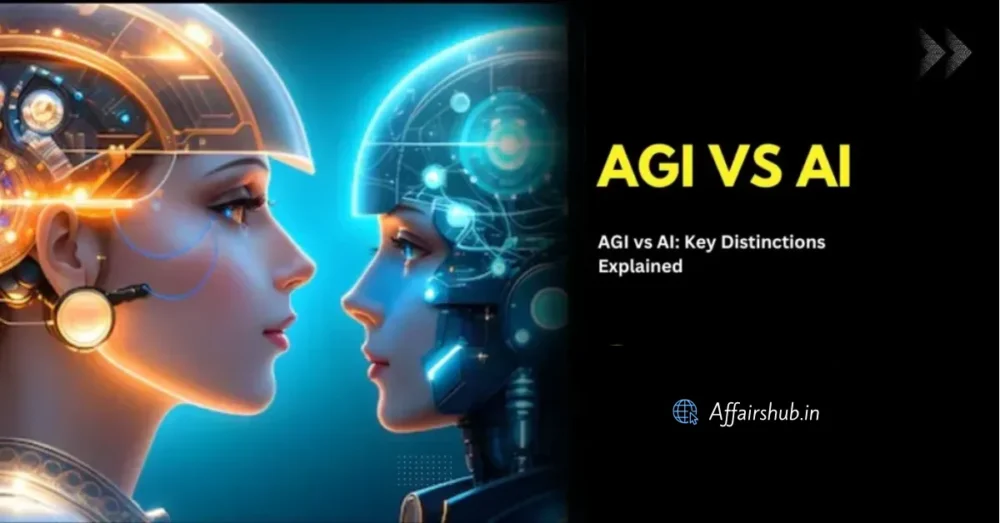Are you an Indian student looking to elevate your essay-writing skills? Or perhaps a teacher seeking innovative ways to engage your students in the art of essay writing? Maybe you’re an educational blogger searching for fresh insights to enrich your content. Look no further! In this blog post, we delve into “5 Game-Changing Essay Writing Tips with ChatGPT” – your ultimate guide to mastering the art of essay writing with the help of cutting-edge AI technology.
In today’s fast-paced world, where communication is key, honing your essay-writing skills is more crucial than ever. And with ChatGPT, an advanced language model developed by OpenAI, at your fingertips, the possibilities are endless. Whether you’re brainstorming ideas, structuring your thoughts, or refining your writing, ChatGPT is here to revolutionize your approach to essay writing.
So, buckle up as we embark on a journey to unlock the secrets of effective essay writing with ChatGPT. Get ready to unleash your creativity, enhance your writing prowess, and take your essays to the next level. Let’s dive in and discover the power of Essay Writing Tips with ChatGPT!
Are you ready to transform your essay writing skills with ChatGPT? Let’s embark on this exciting journey together!
🔰 Explore All Articles on “Artificial Intelligence“
Importance of Essay Writing for High School Students
Essay writing is an essential skill for high school students that goes beyond academics. It’s not just about crafting words on paper; it’s about expressing thoughts, analyzing ideas, and communicating effectively.
In the Indian educational landscape, where exams like the CBSE and ICSE emphasize written communication skills, mastering essay writing becomes paramount.
Essays play a crucial role in exams, college applications, and even future career endeavors. They showcase students’ abilities to articulate ideas coherently, think critically, and demonstrate their knowledge.
Hence, honing essay writing skills early on can significantly impact a student’s academic success and prospects.
“In exams, all your friends have to answer the same essay question. However, if you thoroughly practice writing essays with the assistance of ChatGPT, you can add extra value to your writing that may impress your teacher and also help you to earn more marks.”
Tips by Srikanta Mondal
Challenges faced by students when writing essays
Here are the three main challenges when starting to write an essay:
Brainstorming
One common challenge students face is generating ideas for their essays. Coming up with original and engaging topics can be daunting, especially when prompts seem vague or open-ended.
Indian students may struggle with cultural relevance or finding topics that resonate with their experiences.
Structuring
Another hurdle is organizing thoughts into a coherent structure. Many students grapple with arranging their ideas logically, crafting strong thesis statements, and developing cohesive paragraphs.
In the Indian context, where essays often follow a prescribed format, students may find it challenging to balance creativity with adherence to guidelines.
Finding Relevant Information
Accessing credible and relevant information is crucial for writing compelling essays. Indian students may encounter difficulties in locating appropriate resources, especially on niche topics or when conducting research in regional languages. Additionally, distinguishing between reliable and biased sources can pose a challenge.
To overcome these obstacles, students can utilize strategies such as mind mapping for brainstorming, creating outlines for effective structuring, and utilizing libraries, online databases, and educational websites for research. Collaborating with peers or seeking guidance from teachers can also provide valuable insights and support in navigating these challenges.
Understanding ChatGPT
ChatGPT is an advanced language model developed by OpenAI, designed to understand and generate human-like text based on the input it receives. It operates on a sophisticated artificial intelligence system called GPT (Generative Pre-trained Transformer), which has been trained on vast amounts of text data.
Here’s how it works
- Pre-training: ChatGPT learns from a diverse range of text sources, including books, articles, and websites. During this phase, it analyzes patterns, learns grammar rules, and builds a vast knowledge base.
- Fine-tuning: After pre-training, ChatGPT undergoes fine-tuning to specialize in specific tasks or domains, such as educational content writing for Indian students. This process enhances its ability to generate relevant and contextually appropriate responses.
- Generation: When provided with a prompt or input, ChatGPT uses its learned knowledge and understanding of language to generate a response. It predicts the most probable next words based on the context and generates text that mimics human writing.
- Iterative Learning: ChatGPT continuously learns and improves over time based on user interactions and feedback. This iterative process helps enhance its performance and adaptability to various tasks and contexts.
Overall, ChatGPT’s ability to understand and generate text makes it a valuable tool for tasks like content creation, conversation, and assistance, offering users access to a wealth of information and insights in a conversational manner.
“Suppose your teacher or educator provides you with an essay writing format for certain topics. In the exam, all your friends are using the same structure. However, if you’re familiar with efficient ChatGPT prompts for essay writing, you can refine the format and add more points related to current events in your topics. This can help your essay stand out and demonstrate a deeper understanding of the subject matter.”
Tips by Srikanta Mondal
ChatGPT’s Remarkable Capabilities
Before practicing any prompt, it’s crucial to understand the capabilities of ChatGPT. This understanding enables you to develop more effective prompts for writing any text, including essays. By leveraging ChatGPT’s capabilities, you can craft prompts that elicit insightful responses and enhance the quality of your writing.
- Natural Language Understanding: ChatGPT excels in comprehending and interpreting natural language. It can understand diverse topics, nuances, and context within the input it receives, enabling it to generate relevant and contextually appropriate responses.
- Contextual Awareness: One of ChatGPT’s standout features is its ability to maintain context across conversations. It can remember previous exchanges and incorporate that information into subsequent responses, resulting in more coherent and engaging interactions.
- Language Fluency: ChatGPT demonstrates a high level of fluency in language use, producing text that closely resembles human writing. Its responses are grammatically correct, well-structured, and coherent, making it suitable for various applications requiring natural language generation.
- Creativity and Adaptability: Despite being an AI model, ChatGPT can exhibit creativity in generating text. It can produce original content, generate diverse responses to prompts, and adapt its language style based on the desired tone or audience.
- Multilingual Understanding: While primarily trained on English text data, ChatGPT can comprehend and generate text in multiple languages. This capability enhances its accessibility and usefulness for users across different linguistic backgrounds.
Overall, ChatGPT’s impressive capabilities in understanding and generating human-like text make it a versatile tool for tasks such as content creation, customer support, language translation, and more. Its ability to mimic natural language interaction contributes to a seamless and engaging user experience.

ChatGPT’s Versatility in Assisting with Writing Tasks
ChatGPT can assist in various writing tasks, including essay writing, blog content creation, product reviews, and many more, serving as a super helpful assistant. Here are some of the key examples:
- Idea Generation: ChatGPT can help students brainstorm essay topics by providing suggestions or sparking creative ideas based on their interests or prompts. It can generate diverse topic ideas, ensuring students have a wide range of options to choose from.
- Outline Creation: ChatGPT can assist in outlining essays by structuring key points and organizing ideas logically. Students can provide the main arguments or subtopics, and ChatGPT can generate a comprehensive outline to guide the writing process.
- Content Expansion: When students need to elaborate on their ideas or provide additional supporting evidence, ChatGPT can help expand on existing content. It can suggest relevant examples, explanations, or arguments to strengthen the essay’s arguments and make them more compelling.
- Language Enhancement: ChatGPT can assist in refining the language and style of an essay, helping students improve clarity, coherence, and conciseness. It can suggest alternative phrasing, correct grammar errors, and offer stylistic recommendations to enhance the overall quality of the writing.
- Feedback and Revision: After writing an essay draft, students can use ChatGPT to receive feedback and suggestions for revision. ChatGPT can identify areas for improvement, highlight strengths and weaknesses, and provide actionable insights to help students refine their essays further.
By leveraging ChatGPT’s versatility and capabilities, as a student, you can streamline your essay writing process, enhance the quality of the work, and ultimately, improve your academic performance.
Whether you need assistance with brainstorming, outlining, content expansion, language refinement, or revision, ChatGPT serves as a valuable tool for supporting us throughout the essay writing journey.
5 Essay Writing Tips with ChatGPT
ChatGPT is a powerful tool that can significantly aid students in various aspects of essay writing. Here’s how ChatGPT can assist with essay writing:
Generating Ideas
Suppose a teacher wants to offer their students some fresh and trending essay topics but struggles to come up with ideas. In such cases, ChatGPT can inspire by suggesting relevant topics based on student’s interests or subject matter.
By providing ChatGPT with keywords or specific topics, teachers can generate a variety of potential essay topics for their students to explore and choose from.
Outlining
Suppose I have an essay topic to write about, but I’m unsure about the ideal points to include in my writing. In such cases, ChatGPT can help me create outlines for the essay by organizing main points, subtopics, and supporting arguments.
By providing a brief overview of the essay’s structure, ChatGPT can assist in organizing my thoughts and ensuring a logical flow of ideas.
Research Assistance
ChatGPT can aid students in conducting research by providing information on specific topics, summarizing key concepts, or suggesting credible sources to explore further. Students can ask ChatGPT questions related to their essay topics, and it can provide relevant information to supplement their research efforts.
Writing Guidance
ChatGPT can offer writing tips, suggestions, and examples to help students craft well-written essays. Whether students need assistance with formulating thesis statements, structuring paragraphs, or improving clarity and coherence, ChatGPT can provide valuable guidance throughout the writing process.
Editing and Proofreading
ChatGPT can assist students in editing and proofreading their essays by identifying grammar errors, punctuation mistakes, and awkward phrasings. By receiving feedback from ChatGPT, students can refine their writing and ensure that their essays are polished and error-free.

Overall, ChatGPT serves as a versatile and valuable tool for students seeking assistance with essay writing. By leveraging its capabilities in generating ideas, outlining, research assistance, writing guidance, and editing, students can enhance their writing skills and produce high-quality essays more effectively.
Brainstorming Ideas with ChatGPT
ChatGPT can be a valuable resource for teachers, students, or even educational content creators who are struggling to brainstorm ideas for their essays. By providing prompts and suggestions, ChatGPT can help students generate creative and relevant topics to explore in their writing.
For example, students can ask ChatGPT questions related to their essay topic to spark ideas. Here are some examples:
For an essay on climate change
- Student prompt: “Can you suggest some essay topics related to climate change?”
- ChatGPT response: ” Certainly! Here are some essay topics related to climate change: 👇

For an essay on social media
- Student prompt: “I’m writing an essay on the influence of social media on society. Any ideas for specific aspects to focus on?”
For an essay on Indian culture:
- Student prompt: “I need to write an essay on the diversity of Indian culture. Can you suggest some unique cultural practices or traditions to explore?”
Try it yourself: Input the prompt into ChatGPT and see the amazing ideas it provides. Give it a try, and you’ll be amazed by the insightful responses!
By engaging ChatGPT with specific prompts related to their essay topics, students can receive tailored suggestions and ideas to fuel their brainstorming process. This can help students overcome writer’s block and uncover fresh perspectives to explore in their essays.
Research Assistance with ChatGPT
ChatGPT can serve as a valuable research assistant for students seeking relevant information to support their essays. Here’s how ChatGPT can assist in the research process:
Summarizing Articles
Students can provide ChatGPT with the titles or topics of articles they need to research, and ChatGPT can generate concise summaries of those articles.
These summaries can help students quickly grasp the main ideas and key points of the articles without having to read them in their entirety.
Explaining Complex Topics
If students encounter complex concepts or terminology while conducting research, they can ask ChatGPT for explanations.
ChatGPT can break down complex topics into simpler terms, providing students with a better understanding of the subject matter and helping them integrate that knowledge into their essays.
Suggesting Credible Sources
When students need to find credible sources to cite in their essays, ChatGPT can offer suggestions based on the topic or keywords provided.
It can recommend reputable websites, academic journals, or scholarly articles that align with the student’s research needs, ensuring that they have access to reliable information for their essays.
For example, students can ask ChatGPT questions such as:
- Prompt 1: “Can you provide a summary of the article titled ‘The Impact of Technology on Education’?”
- Prompt 2: “I’m researching the causes of climate change. Can you explain the greenhouse effect in simple terms?”
- Prompt 3: “What are some credible sources I can use to learn more about Indian history?”
By leveraging ChatGPT’s ability to provide summaries, explain complex topics, and suggest credible sources, students can streamline their research process and access the information they need to write well-informed and persuasive essays.
Structuring and Outlining with ChatGPT
ChatGPT can be a valuable tool for helping students organize their thoughts and create a structured outline for their essays. Here’s how ChatGPT can assist in structuring and outlining essays:
Generating Main Points
Students can provide ChatGPT with the main ideas or arguments they want to include in their essays, and ChatGPT can help organize these points into a coherent structure.
By outlining the main points of the essay, students can establish a clear direction for their writing and ensure that their arguments are well-supported.
Organizing Subtopics
ChatGPT can assist students in breaking down their main points into subtopics or supporting arguments.
By providing ChatGPT with the main ideas and asking for suggestions on subtopics, students can create a hierarchical outline that organizes their thoughts logically and systematically.
Formatting the Outline
ChatGPT can help students format their outlines according to the requirements of their essays.
Whether students need to follow a specific structure or formatting style, ChatGPT can provide guidance on how to arrange the sections and subsections of their outline for optimal clarity and coherence.
Tips for Structuring Essays Effectively with ChatGPT:
- Provide Clear Instructions: When asking ChatGPT for assistance with structuring an essay, be sure to provide clear and specific instructions. Clearly outline the main ideas or arguments you want to include and ask ChatGPT to help organize them into a logical sequence.
- Use Keywords and Phrases: Incorporate relevant keywords and phrases into your prompts to guide ChatGPT in generating appropriate responses. This will help ensure that ChatGPT understands your requirements and provides tailored suggestions for structuring your essay.
- Review and Revise: Once ChatGPT has helped create an outline for your essay, take the time to review and revise it as needed. Make sure the outline accurately reflects your ideas and arguments, and make any necessary adjustments to ensure coherence and clarity.
By leveraging ChatGPT’s capabilities in organizing and outlining information, students can create well-structured essays that effectively communicate their ideas and arguments.
Writing Assistance with ChatGPT
ChatGPT can provide valuable assistance to students in writing their essays by offering suggestions for sentence structure, grammar, and vocabulary. Here’s how ChatGPT can help:
- Sentence Structure Suggestions: Students can ask ChatGPT for recommendations on improving the structure of their sentences. ChatGPT can suggest alternative sentence constructions, rephrase awkwardly worded sentences, or offer tips on achieving better clarity and coherence in writing.
- Grammar Corrections: ChatGPT can assist students in identifying and correcting grammar errors in their essays. By asking ChatGPT to review their writing for grammatical mistakes, students can receive feedback on issues such as subject-verb agreement, punctuation errors, verb tense consistency, and more.
- Vocabulary Expansion: ChatGPT can help students enhance their vocabulary by suggesting alternative words or phrases to use in their essays. Whether students are seeking synonyms to avoid repetition or looking for more precise language to convey their ideas, ChatGPT can offer valuable suggestions to enrich their writing.

Revising and Editing with ChatGPT’s Assistance
Here are some key tips for revising and editing your essay to improve its grammar, and sentence structure, and enhance style and tone:
Ensuring Clarity and Coherence
- Revising and editing with ChatGPT’s assistance can help students ensure that their essays are clear, coherent, and well-organized.
- ChatGPT can identify areas where the writing may be unclear or disjointed and offer suggestions for improving overall readability.
Correcting Errors
- ChatGPT can help students identify and correct grammar, spelling, and punctuation errors in their essays.
- By reviewing their writing with ChatGPT’s assistance, students can ensure that their essays are free from common mistakes that can detract from the quality of their work.
Enhancing Style and Tone
- ChatGPT can provide valuable feedback on the style and tone of students’ writing, helping them achieve the appropriate voice for their essays.
- Whether students are aiming for a formal, academic tone or a more casual, conversational style, ChatGPT can offer guidance on refining their writing to meet their desired objectives.
- Overall, revising and editing with ChatGPT’s assistance is essential for ensuring that students’ essays are polished, and coherent, and effectively communicate their ideas.
- By leveraging ChatGPT’s capabilities in providing writing suggestions and feedback, students can improve the quality of their essays and enhance their overall writing skills.
Tips for Using ChatGPT Effectively
How to Write an Effective Prompt for Essay Writing: Here are some crucial tips for prompt generation.
Be Specific and Clear
- When asking ChatGPT for assistance, provide specific and clear questions or prompts to get the most relevant responses.
- Clearly outline your requirements, such as the topic, main ideas, or areas where you need help, to guide ChatGPT in providing accurate and helpful suggestions.
Use Keywords
- Incorporate relevant keywords and phrases into your prompts to ensure that ChatGPT understands your requirements and provides tailored responses.
- Keywords can help ChatGPT identify the specific information or assistance you need and generate more targeted suggestions accordingly.
Provide Context
- Offer context for your questions or prompts to help ChatGPT understand the broader context of your essay topic and writing goals.
- Providing background information or explaining the purpose of your essay can assist ChatGPT in offering more relevant and insightful responses.
Evaluate and Supplement
- Critically evaluate the information provided by ChatGPT and supplement it with your own research and knowledge.
- While ChatGPT can offer valuable assistance, it’s essential to verify the accuracy and credibility of the information provided and to incorporate additional research to ensure the completeness and reliability of your essay.
Collaborate and Iterate
- Use ChatGPT as a collaborative tool to brainstorm ideas, refine your writing, and receive feedback on your essays.
- Engage in an iterative process of writing, revising, and editing with ChatGPT’s assistance to continuously improve the quality of your work and achieve your writing goals.
Practice and Learn
- Experiment with different prompts, questions, and topics to familiarize yourself with ChatGPT’s capabilities and explore its potential applications for essay writing.
- Practice using ChatGPT regularly to enhance your writing skills, learn new strategies, and discover creative approaches to essay writing.
By following these tips and best practices, students can effectively leverage ChatGPT’s capabilities to enhance their essay writing process, improve the quality of their essays, and develop their writing skills.
Conclusion
In conclusion, this blog post has explored how ChatGPT can be a valuable tool for enhancing essay writing skills among students. We discussed several key points:
- Brainstorming Ideas: ChatGPT can assist students in generating essay topics by providing prompts and suggestions tailored to their interests and requirements.
- Research Assistance: Students can leverage ChatGPT’s ability to summarize articles, explain complex topics, and suggest credible sources to aid in their research efforts.
- Structuring and Outlining: ChatGPT can help students organize their thoughts and create well-structured outlines for their essays, ensuring a logical flow of ideas.
- Writing Assistance: ChatGPT offers suggestions for improving sentence structure, grammar, and vocabulary, helping students refine their writing and communicate their ideas effectively.
Using ChatGPT as a tool for essay writing offers numerous benefits. It can streamline the writing process, provide valuable insights and guidance, and foster creativity and critical thinking. By utilizing ChatGPT responsibly and consistently, students can enhance their writing abilities, develop valuable skills, and achieve academic success.
However, it’s important for students to remember to critically evaluate the information provided by ChatGPT and supplement it with their own research and knowledge. Additionally, students should use ChatGPT ethically and responsibly, avoiding plagiarism and ensuring that their essays reflect their own ideas and insights.
Incorporating ChatGPT into their writing process can empower students to become more confident and proficient writers, ultimately helping them excel academically and beyond.






